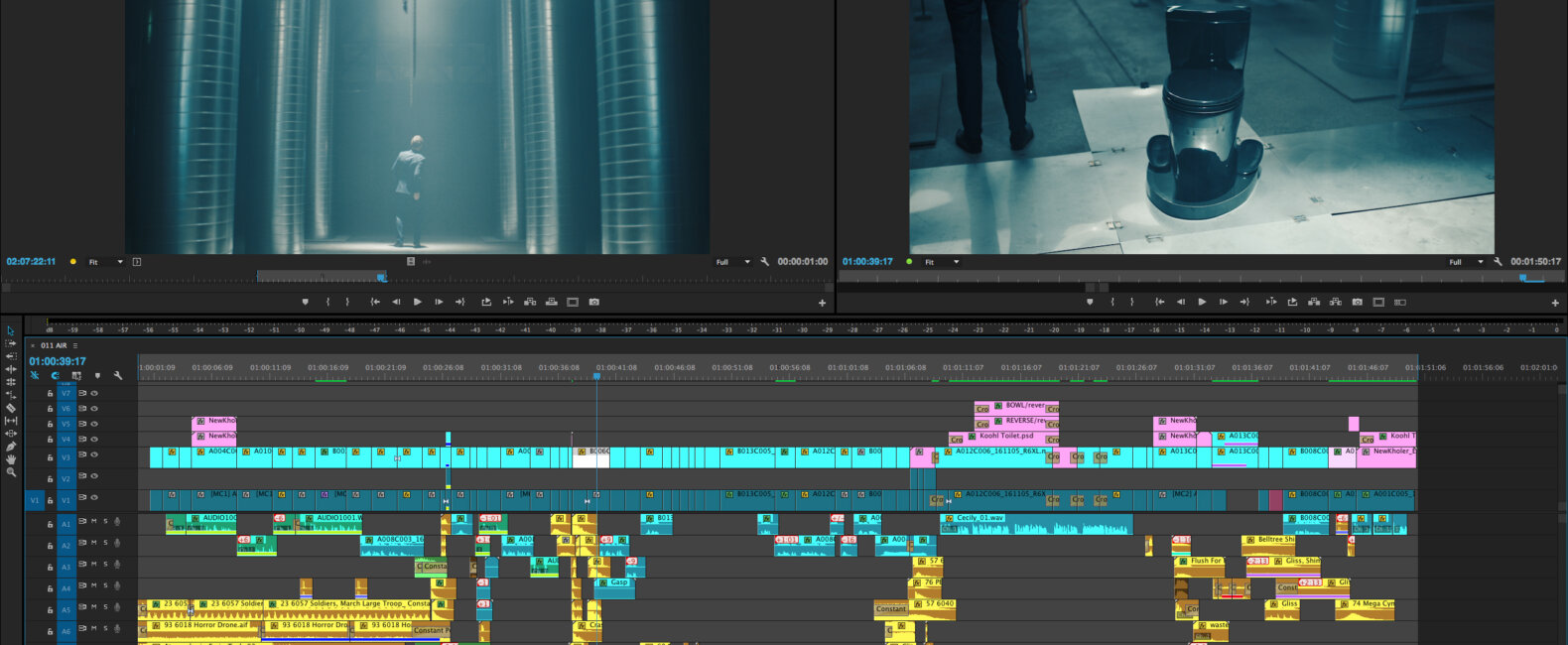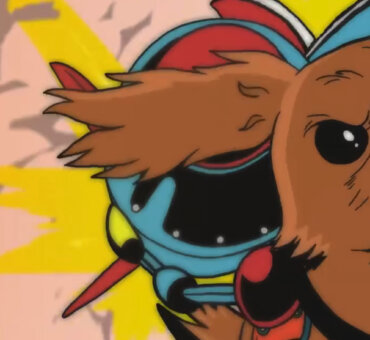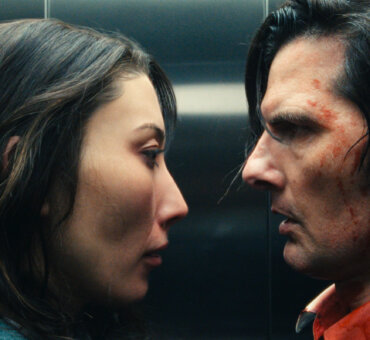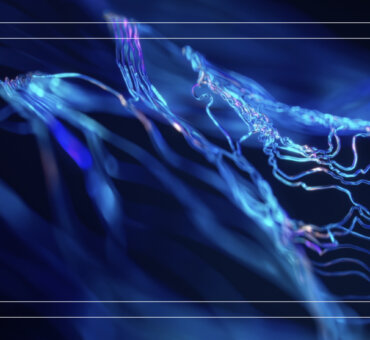Every week, the Saturday Night Live Film Unit team pulls off a not-so-small miracle. They produce, shoot, edit, and broadcast a fully realized short film in less than four days. For their editor Adam Epstein, that leaves roughly one day for post-production. One day. Sometimes less. And you thought your deadlines were stressful. After eight years of editing SNL shorts — and having never missed a broadcast deadline — Adam has made a seemingly impossible task part of his weekly routine.
We asked him how the heck he does it.
The Intense Schedule of SNL Shorts
Adam Epstein: The schedule is the same every week. And it’s intense. Everything is written on Tuesday night. The writers start from scratch and work all through the night. Then on Wednesday afternoon, there’s the read-through where all the writers and directors and producers and cast get together to read through everything that was written the night before. Based on that read-through, they pick the scripts that are going to get produced for the live show. A handful of those scripts — two or three — are deemed the “film pieces,” which are handed to us. So before Wednesday night, the Film Unit has no idea what we’re going to be doing. Pre-production starts Wednesday night and goes all day Thursday. It’s a testament to how absolutely amazing everyone is on the production team, hair and makeup, wigs, props. Everyone is just so good — it’s ridiculous.
The vast majority of our pieces are shot Friday. Often times we don’t start shooting until the evening. Sometimes 7 p.m. When it’s late like that, I’ll either start editing on set with a mobile station — just ingesting the footage directly, organizing and cutting right there. Or I’ll be back at 30 Rock, and I’ll have an assistant doing the initial prep, while I’m doing very soft assemblies like pulling sound effects or making graphics. And they send shuttles back and forth between the set and 30 Rock.
On Friday night, I’ll usually work until three or four in the morning, then come back on Saturday around 11 a.m. We have to have a cut that’s pretty much done by dress rehearsal at 8 p.m. Keep in mind that we’re also sending the footage out of house for color correction as well as having a final mix done in house. And since I’ve been working there, the graphics and effects we attempt to create keep getting more and more involved. We now have a small team of incredibly dedicated and talented graphics artists for more intense jobs and composite work, but I try to keep things in box as much as I can. The piece plays for the first time between 8 and 9:30 p.m., depending on where it falls in the Dress rehearsal rundown, and that’s the first time Lorne Michaels sees the cut.
Based on Lorne’s feedback, the audience’s reaction, and the notes from the writers and producers, we make our last-minute edits. Usually we have about an hour and a half to make the revisions. We’ll normally deliver our final picture about 10 to 15 minutes before it’s on the air.
Filmsupply: And you do that every week?
AE: Every week.
Managing Your Stress Under a Deadline
AE: When I first started, working this way was considerably more stressful than it is now. Part of the stress was just, “Oh my god. This is SNL. I’ve loved this show since I was a kid — the last thing I want to do is screw it up.” That kind of stress can have a snowball effect if it gets out of control. But what got me through, and the thing that continues getting me through, is the fact that everyone working at SNL is so good at what they do. We’re all focused on the same goal. There’s no time for egos or overthinking or second-guessing. That’s the crazy paradox of having insane timelines. I’ve explained it before as a sort of post-production improv. You’re going by your gut so heavily — if something feels right and gets a laugh, that’s usually what you go with. The paradox is that restrictive timelines can actually be creatively freeing.
Staying calm seems especially important when it comes to improvisation.
AE: Definitely. You have to learn to stay calm. You can’t overthink it. It’s forced me to be very, very organized, and to have a very standardized system to the way I approach every job — even if the projects are thematically all over the map, which they are.
So establishing a repeatable organizational system is a key part of working under intense deadlines?
AE: 100%. If you’re a creative editor, the last thing you should be thinking about is folder hierarchy or structure, or asking yourself, Where did I put that? That gets in the way of the fun stuff — the actual pure creativity of what you’re doing in the moment. That sense of improvisation I was talking about. So we use pre-set project structures that are always exactly the same. My Finder structure never changes. None of this is groundbreaking, of course. To me, the more you can do to prevent the nuts and bolts of editing from getting in the way of the more and creative aspects of the process the better.
Managing Everybody’s Stress Under a Deadline
AE: One thing SNL has taught me more than anything else is that managing the emotional state of the room is almost as important as the work itself. If everyone is comfortable and feeling that things are going in the right direction, it’s going to make everything better. And that can come down to the little things like having your footage organized so you’re not digging through it when a writer or director wants to see a certain clip. When you have it ready to go, it makes you look better as an editor; it makes the job flow faster; and it puts everyone’s mind at ease, which is so important when it comes to keeping things from spiraling out of control.
I am always trying to maintain the feeling that everything is heading in the right direction. Let’s say it’s Saturday and I don’t have a full cut yet. If a producer comes in and says, “How are we doing?” I always try to have a little piece of it ready to go — something that’s really working — and I say, “This is gonna be great – have a look at this!” I want to show them something that’s working to get them in that positive mind-set. Then they feel good about where things are at and I get back to work.
Practice, Practice, Practice
AE: When you do something a lot, the baseline for what you can get done in a shorter amount of time keeps raising. When we now look back on pieces we did four years ago — stuff we couldn’t believe we pulled off at the time — we’re just like, “Wow, it’s so simple compared to what we’re doing now!” It’s that evolution of figuring out a better, faster way to do a million tiny things by doing it again and again.
And it sounds like doing it again and again with the same people.
AE: I seriously can’t emphasize that enough. To me, that’s the most important part of working fast under a deadline: the team. Which honestly is my favorite aspect of filmmaking in general. At SNL, I’ve been extremely lucky to work with amazing directors like Rhys Thomas and Oz Rodriguez and incredible DPs like Alex Buono and Blake McClure. But everyone in the Film Unit at every level of production and post is a true professional.
We’re at a weird time where it’s very easy to be a one-man crew. And that’s great. But to me, when you’re working by yourself, you’ll never get to the same level that you will by working with a dedicated team. Everyone is bringing everything they have. That’s key. Having a good group — a good crew — that’s not just an important aspect. It’s the most important aspect.
Workflow
AE: Starting is hard — especially when you’re under a deadline and staring at a blank timeline. So when I’m going through dailies or pulling selects, I like to find the keystones. The pieces that are just working. I get those down first, no matter where they fall in the piece – there might be one that’s a third of the way in, then another that’s two-thirds of the way in. Then I build out around those.
Creating the Illusion
AE: Even though we work so quickly, we try not to cut any corners. So much of the reason why the pieces look so high quality is the art direction and props and set builders and gaffers and costuming and hair. I’m given such great material to work with. My job is to not screw it up – to make sure I don’t get in the way of everyone else’s great work.
One thing that can really ruin the illusion that we spent more than a couple days on these things is the sound design. To me, that’s often really what separates projects that feel professional from projects that feel amateur. A fully, rich sound bed is one of the main reasons why found footage films like The Blair Witch Project can work…and on the other end, you could shoot something in IMAX, but if the audio sounds crappy, you can’t watch it. So I really focus on getting the sound feeling rich and full. Due to our timelines, it’s harder to save those things for the end, like you normally would — I try to get things sounding as good as I can right out of the gate.
Etc.
What’s the closest you’ve been to not finishing?
AE: It was a Wes Anderson horror trailer parody we did a few years ago. The shoot didn’t wrap until 6 a.m. on Saturday. So we scrambled all day putting it together, and we were about to deliver it 10 minutes before air when we noticed one of the anamorphic shots we got back from color hadn’t been unsqueezed. We were like, “Okay. We’re screwed.” We did a super-quick fix and kicked it out to the control room with three minutes left. We had no idea whether they’d have time to feed in the correct one, until we went down to the monitors. We knew that if the piece opened with one shot, it was the good version. If it opened with another, it was the bad version. So we’re all standing there and the first shot comes on and it’s the right one and everyone let out this huge cheer. That was the tightest one yet – they basically played it live-to-air. So far, we haven’t dropped the ball. Knock on wood.
Do you ever change the films between when they air and when they go online?
AE: If there are any changes, they are very, very minimal. Usually just fixing a title, or sometimes we’ll have to use different music if we can’t get the rights to the piece we used on air in perpetuity. Little things like that.
Are there lessons you’ve learned from working quickly that you apply when you have more time?
AE: Even if I’m working on a commercial (out of commercial post-house and all around wonderful place PS260) where there’s a couple weeks from start to finish, I like to take the SNL mentality of just cranking through the first cut. Do it mostly on gut and see how that works out. When you work that way, a lot of times you can surprise yourself and can create happy accidents that are better than anything you could think up. Then you can go back and refine something tangible vs trying being overly precious about your first cut.
Which do you prefer: Having a long time to edit or a very short amount of time?
AE: They scratch different itches and I really enjoy them both. I love the SNL stuff because I’m working with my friends, plus, there is the very unique experience of getting a reaction from a live audience. We’ll walk down to the floor and hear people reacting to something we finished 15 minutes ago. When you work on a movie or a tv show like Documentary Now!, it can be months or more before you get any response so it’s far less fresh in your mind.
What’s your favorite SNL short you’ve made? Ours is Undercover Boss: Star Killer Base.
AE: That one was really fun. The guys who wrote that are such huge Star Wars dorks. I am too. They built that Death Star set in a day. It’s crazy. But I think my favorite one was our piece from the season finale last year, Farewell, Mr. Bunting, a Dead Poets Societyparody with a twist. It got the biggest live audience reaction I’d heard which was really fulfilling. The fact that it was the season finale, that it was with the team that had been working together so well for so long, and then to get a huge reaction like that — it was definitely a special one.






